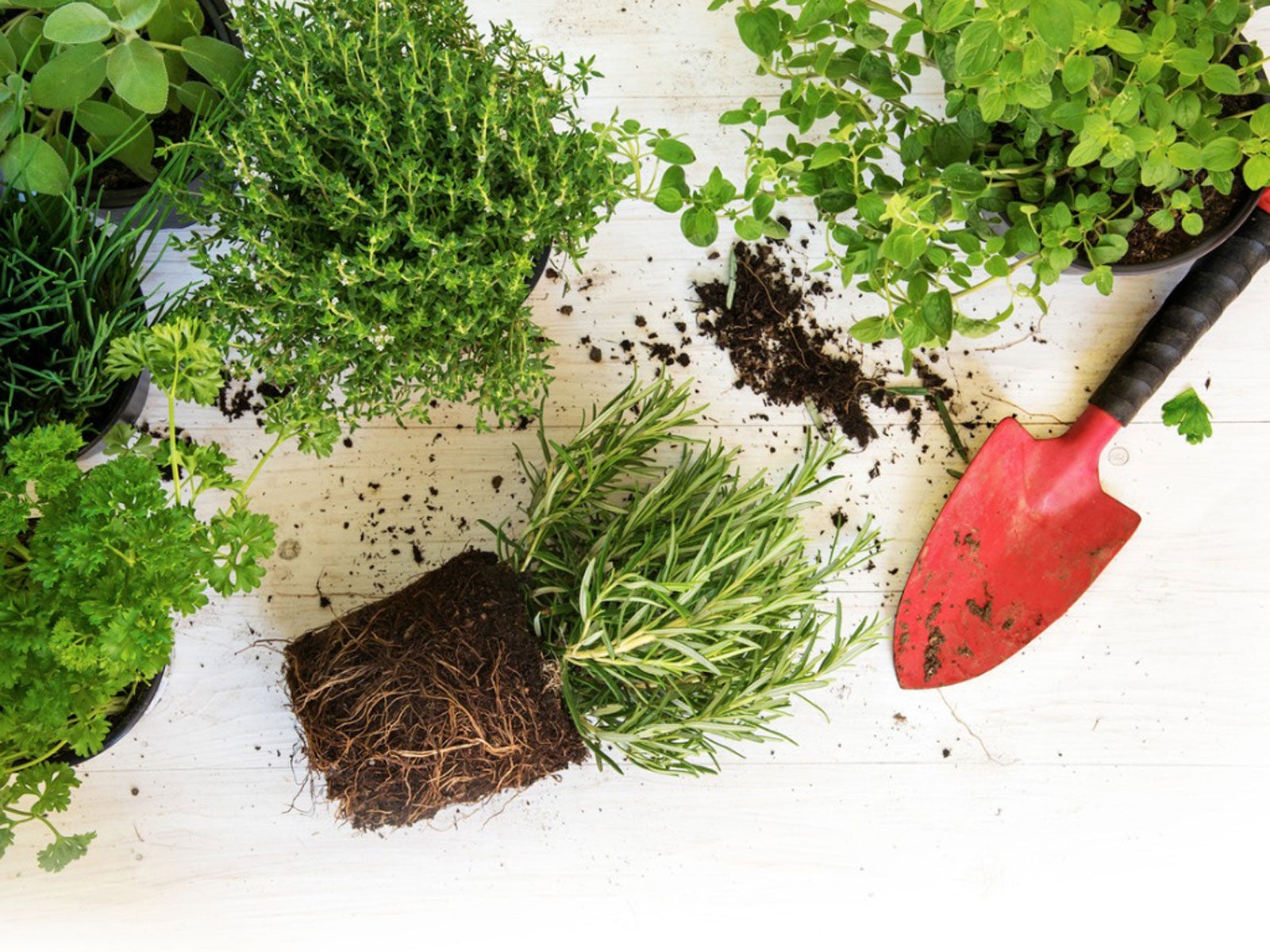Fish Tank Herb Garden – Growing Herbs In An Old Aquarium


If you have an empty aquarium taking up space in your basement or garage, put it to use by turning it into an aquarium herb garden. Growing herbs in a fish tank works well because the aquarium lets in light and keeps the soil fairly moist. Growing herbs in an old aquarium isn’t difficult. Read on to learn how.
Planning an Aquarium Herb Garden
Three plants are plenty for most aquarium gardens. A larger tank will accommodate more but allow at least 3 to 4 inches (8-10 cm.) between plants.
Be sure the plants have the same growing conditions. Don’t grow moisture loving basil with herbs that like dry conditions, for instance. An internet search will help you determine what herbs make good neighbors.
Growing Herbs in a Fish Tank
Here are some tips for planting herbs in an aquarium:
- Scrub the tank with hot water and liquid dish soap. If the tank is gnarly, add a few drops of bleach to disinfect it. Rinse thoroughly so no traces of soap or bleach remain. Dry the fish tank with a soft towel or allow it to air dry.
- Cover the bottom with about an inch (2.5 cm.) of gravel or pebbles. This is critical because it prevents water from pooling around the roots. Cover the gravel with a thin layer of activated charcoal, which will keep the aquarium fresh and prevent the environment from getting too humid. Although a thin layer of sphagnum moss isn’t an absolute requirement, it will prevent potting mix from sifting down into the gravel.
- Fill the tank with at least 6 inches (15 cm.) of potting soil. If the potting soil feels heavy, lighten it with a little perlite. Plant roots can’t breathe if the potting soil is too heavy. Moisten the potting soil evenly, but not to the point of sogginess.
- Plant small herbs in the damp potting mix. Arrange the aquarium with taller plants in the back, or if you want to view your garden from both sides, put taller plants in the middle. (If you prefer, you can plant herb seeds). If you like, add embellishments such as figurines, driftwood, or stones.
- Place the fish tank herb garden in bright sunlight. Most herbs need sun for at least six hours per day. You may need to put the aquarium herb garden under grow lights. (Do your homework, as some plants can tolerate light shade).
- Water your fish tank herb garden carefully and keep in mind that other than the layer of gravel, excess water has nowhere to go. It works well to water the potting soil lightly with a mister while keeping the foliage as dry as possible. If you aren’t sure about the plant's water needs, feel the potting mix carefully with your fingers. Don’t water if the potting soil feels moist. If you aren’t sure, check the moisture level with the handle of a wooden spoon.
- Feed the herbs every two to three weeks during spring and summer. Use a weak solution of water-soluble fertilizer mixed at one-quarter of the recommended strength.
Gardening tips, videos, info and more delivered right to your inbox!
Sign up for the Gardening Know How newsletter today and receive a free copy of our e-book "How to Grow Delicious Tomatoes".

A Credentialed Garden Writer, Mary H. Dyer was with Gardening Know How in the very beginning, publishing articles as early as 2007.
-
 Zinnias On Repeat: 10 Glorious Cut-And-Come-Again Varieties For Endless Summer Bouquets
Zinnias On Repeat: 10 Glorious Cut-And-Come-Again Varieties For Endless Summer BouquetsThese zinnia varieties keep giving all summer, making them the perfect choice for dedicated cutting gardens – or just the occasional homegrown bouquet.
By Ellen Wells
-
 Create A Romantic Garden Straight Out Of Bridgerton: Regency Era Romance In Your Garden
Create A Romantic Garden Straight Out Of Bridgerton: Regency Era Romance In Your GardenTry some romantic garden ideas straight out of Bridgerton. Flowers and gardens in the Regency era were lush and charming and you can get the same look!
By Bonnie L. Grant